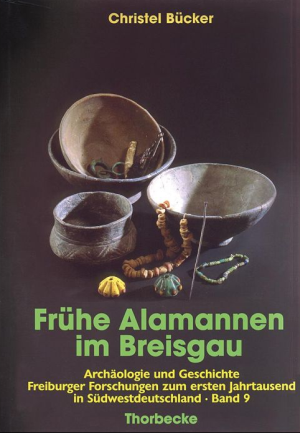Lohrke, Brigitte
Frühe Alamannen im Breisgau: Untersuchungen zu den Anfängen der germanischen Besiedlung im Breisgau während des 4. und 5. Jahrhunderts nach Christus
Due to numerous excavations and new discoveries in recent years, the starting position for the exploration of the Breisgau region on the southern Upper Rhine in early Halamannic times has improved considerably. In late antiquity, the Breisgau was a border area between Romans and Germanic tribes. Roman castles on the Rhine on the one hand and Early Halamanian settlements on the plain and on the Black Forest rims on the other hand were partly in close proximity. Especially the extensively excavated settlement of Mengen on the Tuniberg and the hilltop settlement on the Zähringer Burgberg brought numerous new aspects to the archaeology and history of the early Alamanni.
The extensive analysis of the hand-formed Germanic pottery was a prerequisite for the assessment of the Early Alemannian settlement in the Breisgau region, since the pottery of the Early Alamanni shows formal similarities with the pottery of some prehistoric settlement phases, and there were often confusions. With this investigation it has been possible to highlight technological differences between the hand-formed pottery of early Alamanni and prehistoric times, which allow a clear attribution.







